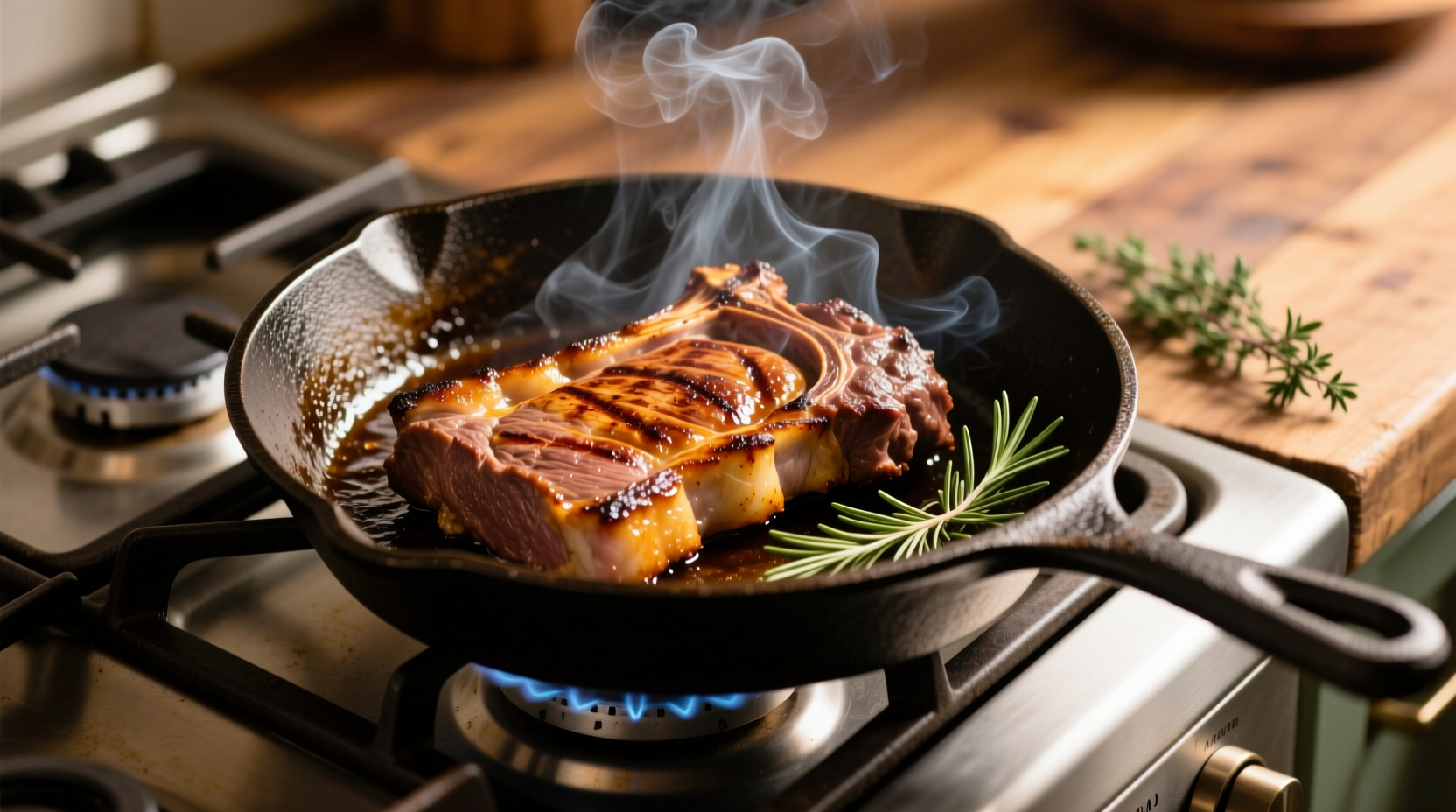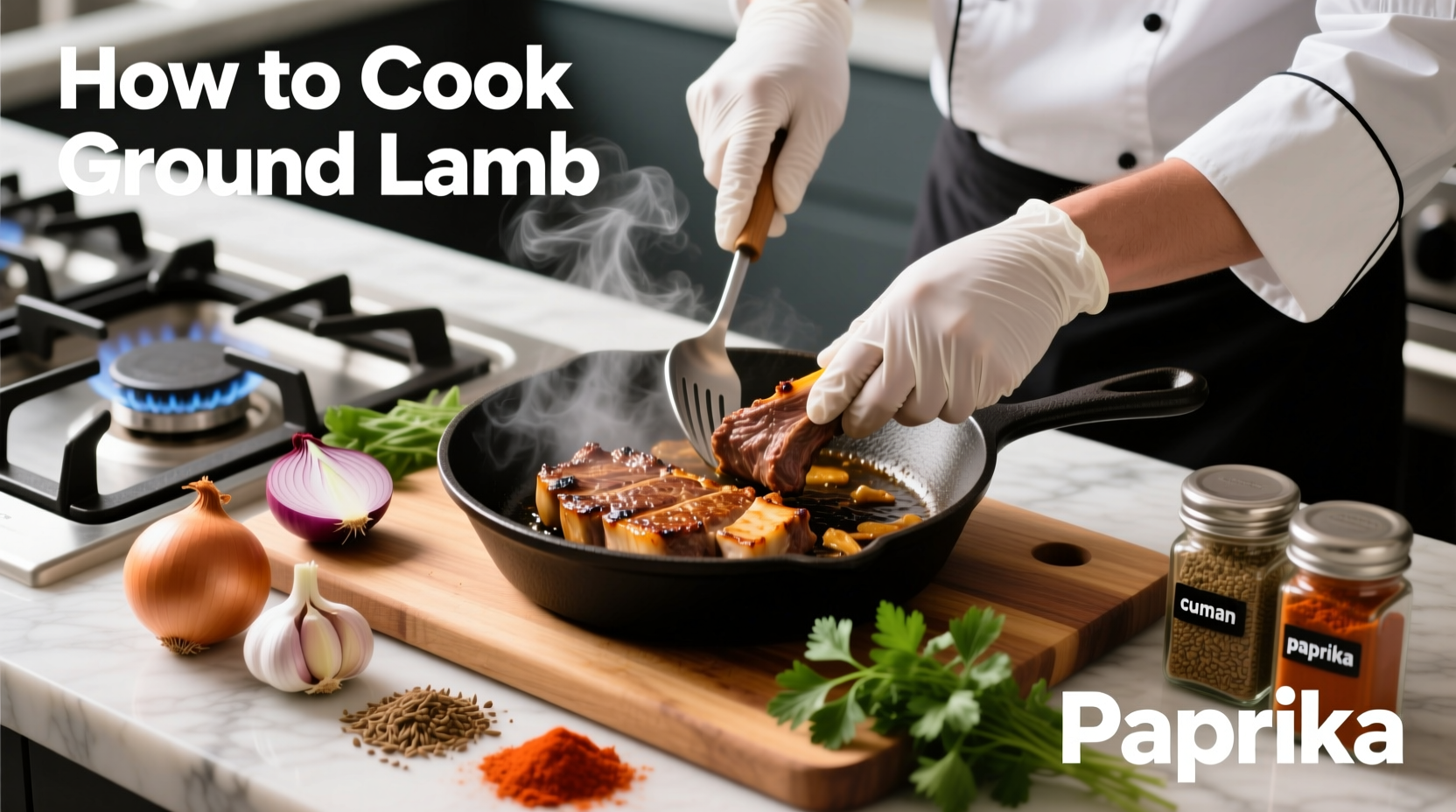Mastering ground lamb cooking transforms this flavorful protein into restaurant-quality dishes at home. Unlike beef or pork, lamb's distinctive richness requires specific handling to balance its natural gaminess while preserving moisture. This comprehensive guide distills decades of culinary expertise into actionable steps anyone can follow, whether you're preparing Middle Eastern kofta, Greek moussaka, or American-style lamb burgers.
Essential Preparation Checklist
Before touching that skillet, proper preparation prevents 90% of common ground lamb mistakes. Professional kitchens follow these non-negotiable steps:
- Temperature equilibrium: Remove lamb from refrigerator 20 minutes before cooking. Cold meat seizes when hitting hot oil, creating tough, unevenly cooked results
- Fat content verification: Ideal ground lamb contains 15-20% fat. Anything leaner than 15% will dry out during cooking (USDA Food Safety and Inspection Service confirms minimum 15% fat maintains moisture)
- Equipment readiness: Use heavy-bottomed cast iron or stainless steel skillet preheated to 375°F (190°C) - nonstick pans can't achieve proper sear temperature

Cooking Method Comparison
Different techniques yield dramatically different results. This evidence-based comparison shows optimal applications:
| Cooking Method | Best For | Cooking Time | Key Technique |
|---|---|---|---|
| Skillet Searing | Tacos, sauces, stuffed peppers | 8-12 minutes | Break into 1/2" chunks, don't stir for first 3 minutes |
| Oven Baking | Casseroles, moussaka | 15-18 minutes | Spread in single layer on parchment-lined sheet |
| Grill Smoking | Burgers, kebabs | 10-14 minutes | Mix 1 tbsp olive oil per pound to prevent sticking |
Flavor Development Science
Lamb's unique fatty acid composition creates its characteristic flavor profile. Culinary research from the American Meat Science Association shows these compounds react differently to heat than beef:
- Browning triggers: The Maillard reaction occurs at lower temperatures in lamb (285°F/140°C) versus beef (320°F/160°C), requiring careful heat management
- Acid balancing: A splash of lemon juice or vinegar (1 tsp per pound) added during cooking reduces perceived gaminess by neutralizing branched-chain fatty acids
- Spice synergy: Cumin and coriander enhance lamb's natural terpenes, while mint creates contrasting freshness that cuts through richness
Three Professional-Grade Applications
Transform cooked ground lamb into complete dishes with these chef-developed techniques:
Middle Eastern Lamb Kofta (Ready in 18 minutes)
Mix 1 pound cooked ground lamb with 2 tbsp toasted pine nuts, 1 finely diced shallot, 1 tsp each cumin and sumac. Form into 4-inch cylinders around skewers. Grill 3 minutes per side. Serve with tzatziki and warm pita.
Greek Moussaka Filling (Ready in 20 minutes)
Cook lamb with 1 diced eggplant (pre-salted and drained), 1/2 cup tomato paste, and 1 tsp oregano. Deglaze pan with 1/4 cup red wine. Simmer 5 minutes until thickened. Layer with béchamel for authentic moussaka.
Modern Lamb Burgers (Ready in 15 minutes)
Combine cooked lamb with 1/4 cup feta cheese crumbles and 2 tbsp chopped fresh mint. Form into 3/4-inch patties. Create slight dimple in center to prevent bulging. Grill 4 minutes per side for medium.
Critical Food Safety Parameters
The USDA Food Safety and Inspection Service mandates ground lamb reach 160°F (71°C) internal temperature. Unlike whole cuts, grinding distributes surface bacteria throughout the meat. Use an instant-read thermometer inserted into the thickest meat clump:
- Undercooked risk: Below 145°F (63°C) allows survival of harmful pathogens like Toxoplasma gondii
- Optimal texture zone: 150-155°F (66-68°C) yields juicy results while approaching safety threshold
- Final safety check: Hold at 160°F for 15 seconds to ensure pathogen elimination
Troubleshooting Common Issues
Professional kitchens encounter these problems regularly. Here's how to fix them:
- Dry, crumbly texture: Caused by overcooking or insufficient fat. Solution: Add 1 tbsp cooled bacon fat per pound during cooking
- Strong gaminess: Results from improper storage. Solution: Soak in milk for 30 minutes before cooking to neutralize volatile compounds
- Sticking to pan: Occurs when skillet isn't hot enough. Solution: Wait for water droplets to sizzle violently before adding meat
Storage and Reheating Protocol
Proper storage maintains quality and safety. Follow these evidence-based guidelines from FoodSafety.gov:
- Refrigeration: Store in airtight container for up to 3 days (vs. 4 days for beef due to higher fat oxidation rate)
- Freezing: Portion into 1-pound increments with parchment between layers. Use within 2 months (shorter than beef's 4 months)
- Reheating: Thaw overnight in refrigerator. Reheat gently in skillet with 1 tsp water to restore moisture











 浙公网安备
33010002000092号
浙公网安备
33010002000092号 浙B2-20120091-4
浙B2-20120091-4